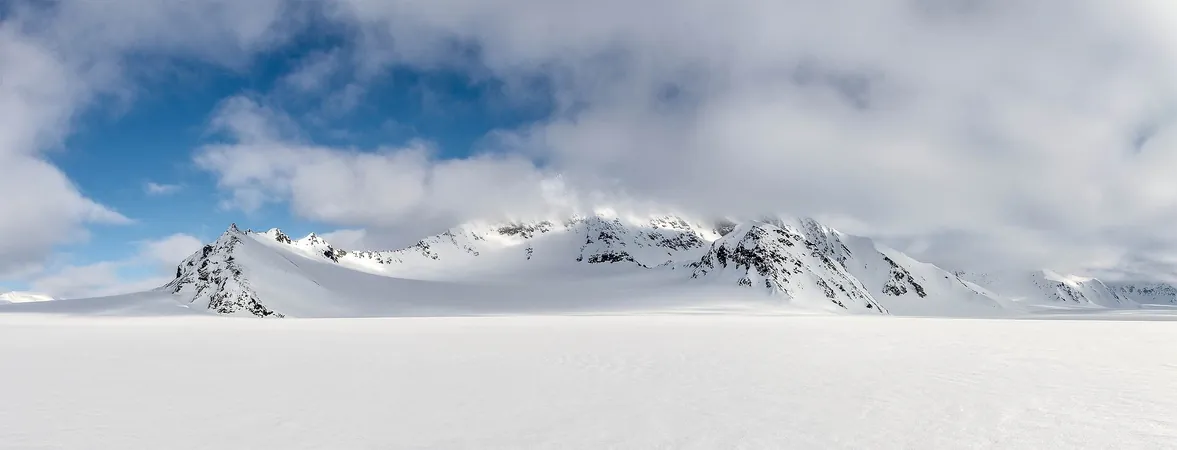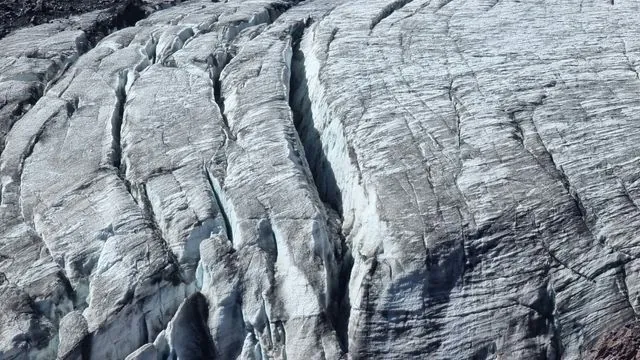
Unveiling the Impact of Carbon Dioxide on Earth's Climate: A Groundbreaking Study Reveals the Secrets of the Late Paleozoic Ice Age
2025-01-07
Author: Yu
Introduction
A staggering 370 million years ago, our planet plunged into one of the longest-lasting and most intense ice ages on record: the Late Paleozoic ice age. This extreme climatic period saw huge continental ice sheets blanket vast regions of the Earth and caused sea levels to plummet over 100 meters. Lasting approximately 100 million years, this ice age not only marked a pivotal transition in Earth's climate history but also played a crucial role in the evolution of life.
As the Earth transitioned in and out of the Late Paleozoic, significant changes took place that shaped the subsequent geological periods. This era gave rise to the legendary "coal forests," thriving with giant insects during the Carboniferous period, and laid the groundwork for the emergence of reptiles in the following Permian period.
Groundbreaking CO₂ Research
In an exciting new study, an international team of scientists, led by an esteemed researcher, has uncovered groundbreaking evidence demonstrating that carbon dioxide (CO₂) was a key player in this monumental climatic transition. The Late Paleozoic ice age has long been an enigma, as estimates of atmospheric CO₂ levels during that time have shown vast discrepancies, with temperature reconstructions varying by as much as 20°C.
Geologists have tried to track the ice age through glacial deposits, but this method is hindered by the geological record's incompleteness, often leading to paradoxical findings, such as high ice conditions coinciding with elevated CO₂ levels.
A Revolutionary 80-Million-Year CO₂ Record
The team’s pioneering research offers a newly reconstructed 80-million-year CO₂ record that elegantly tracks the climate's descent into and emergence from this icy epoch. By examining fossilized shells of ancient clam-like creatures known as brachiopods, the researchers were able to extract chemical signatures, such as boron isotopes, that reveal how much CO₂ was present in the atmosphere during the lives of these ancient organisms.
This innovative approach to reconstructing CO₂ levels from deep geological history is unprecedented. By creating a consistent timeline, the researchers managed to synthesize various historical climate data, demonstrating that CO₂ levels closely regulated the climate throughout the Late Paleozoic era.
Findings from the Study
So what did this elusive climate look like? The study found that atmospheric CO₂ levels were relatively low, measuring around 330 parts per million (ppm), and dipped to a mere 200 ppm approximately 298 million years ago, around the critical boundary between the Carboniferous and Permian periods. It was this low concentration of carbon dioxide, combined with diminished solar heat from a younger sun, that generated severe “icehouse” conditions, extending ice sheets into mid-latitude regions.
The End of the Ice Age
Perhaps one of the most astonishing findings of the research is how abruptly the Late Paleozoic ice age came to an end. Contrary to previous assumptions that the ice age gradually retreated, the study revealed a sudden termination around 294 million years ago, triggered by extensive volcanic activity that caused a rapid geological increase in atmospheric CO₂ levels, resulting in a warmer and drier Earth.
While the last few decades have yielded advances in understanding CO₂ dynamics over the past 60 million years—primarily through seafloor sediment analysis—reconstructing CO₂ levels from rock records remains a formidable scientific challenge. This study marks a significant achievement in geological reconstruction, unlocking crucial data about Earth's climatic history from the dawn of its fossil record.
Implications for Today
As we grapple with climate change today, recognizing the historical role of CO₂ is vital in understanding Earth's system as a whole. Continuous refinement of these records will help us understand the influence of carbon dioxide on our planet's climate and habitability—past, present, and future.
Looking to the Future
Understanding how CO₂ affected life on Earth millions of years ago may provide critical insights into addressing today's escalating climate crisis. The lessons from the Late Paleozoic ice age remind us that our climate system is complex and sensitive to anthropogenic changes, posing urgent questions for our planet's future.






 Brasil (PT)
Brasil (PT)
 Canada (EN)
Canada (EN)
 Chile (ES)
Chile (ES)
 Česko (CS)
Česko (CS)
 대한민국 (KO)
대한민국 (KO)
 España (ES)
España (ES)
 France (FR)
France (FR)
 Hong Kong (EN)
Hong Kong (EN)
 Italia (IT)
Italia (IT)
 日本 (JA)
日本 (JA)
 Magyarország (HU)
Magyarország (HU)
 Norge (NO)
Norge (NO)
 Polska (PL)
Polska (PL)
 Schweiz (DE)
Schweiz (DE)
 Singapore (EN)
Singapore (EN)
 Sverige (SV)
Sverige (SV)
 Suomi (FI)
Suomi (FI)
 Türkiye (TR)
Türkiye (TR)
 الإمارات العربية المتحدة (AR)
الإمارات العربية المتحدة (AR)